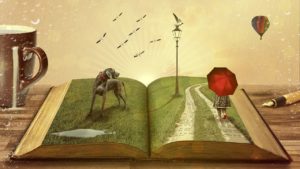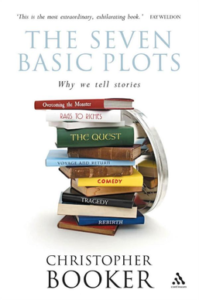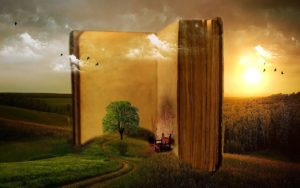No, not the internecine conspiracies in White House or Westminster ( though there probably are some, now everyone is back from the summer hols ), but a quick trot through the theory of plots.
There have been many attempts to define and categorise basic story lines, from Aristotle’s Poetics onwards. E.M.Forster had something to say about plot and plotting in Aspects of the Novel (1956) and made the oft-quoted distinction between plot and story. ‘The king died, then the queen died‘ is, according to him, story, while ‘The king died and then the queen died of grief’ is a plot. Cause and effect being necessary for the second of the two.
Folk tales have been classified using the Aarne-Thompson  system, according to motif, so stories about, say, animal helpers e.g. The Golden Goose, are classified together. This system has been up-dated and enhanced and is now widely used by folklorists. But it doesn’t always capture facets of plot and doesn’t reduce the, huge, numbers of stories into basic plot types.
system, according to motif, so stories about, say, animal helpers e.g. The Golden Goose, are classified together. This system has been up-dated and enhanced and is now widely used by folklorists. But it doesn’t always capture facets of plot and doesn’t reduce the, huge, numbers of stories into basic plot types.
The latest attempt to do so, which garnered much criticism as well as much praise was by Christopher Booker in The Seven  Basic Plots: Why We Tell Stories (2004). Booker described seven basic plot lines – though he subsequently added another two. These include ‘from rags to riches’, ‘overcoming the monster’, ‘quest’, ‘comedy’, ‘tragedy’, ‘voyage and return’ and ‘rebirth’. The additional two are ‘mystery’ and ‘rebellion against the one’ though Booker likes these less as they are less amenable to his Jungian-influenced analysis, which is all about inner conflict. For Booker the protagonist is all.
Basic Plots: Why We Tell Stories (2004). Booker described seven basic plot lines – though he subsequently added another two. These include ‘from rags to riches’, ‘overcoming the monster’, ‘quest’, ‘comedy’, ‘tragedy’, ‘voyage and return’ and ‘rebirth’. The additional two are ‘mystery’ and ‘rebellion against the one’ though Booker likes these less as they are less amenable to his Jungian-influenced analysis, which is all about inner conflict. For Booker the protagonist is all.
By the way, one classic story type, the romance ( boy meets girl, girl meets girl, whatever variation ) is included as a sub-set of comedy.
So far, so interesting. It’s an amusing parlour game to fit your favourite stories into this model, but, in my view, it isn’t particularly useful. Tragedy was defined by Aristotle in BCE Athens and his definition has lasted. The other plots have, to a greater or lesser extent, been identified before too ( Booker isn’t the first to attempt this exercise ).
Is it useful to writers? Not sure. One takes whatever help one  needs and it does prompt thought and provides a vocabulary with which to consider story. The Jungian-based analysis, which is the consistent underlying concept here, pre-supposes certain things which one may or may not wholly buy into – so, for example, all minor characters in a story are really external representations of aspects of the central character.
needs and it does prompt thought and provides a vocabulary with which to consider story. The Jungian-based analysis, which is the consistent underlying concept here, pre-supposes certain things which one may or may not wholly buy into – so, for example, all minor characters in a story are really external representations of aspects of the central character.
This doesn’t fit with many mystery stories, particularly of the  detective type, as there is no pre-existing relationship between, say, Holmes and his clients, though The Athenian Murders by Jose Carlos Somoza (2000) rather confounds my argument here, which is as much a philosophical dissection of the internal workings of the protagonist’s mind as a classic murder mystery ( I have written about this before, see Historical Detectives ).
detective type, as there is no pre-existing relationship between, say, Holmes and his clients, though The Athenian Murders by Jose Carlos Somoza (2000) rather confounds my argument here, which is as much a philosophical dissection of the internal workings of the protagonist’s mind as a classic murder mystery ( I have written about this before, see Historical Detectives ).
In the end, while of interest, I think this exercise is just too reductive. Stories are as complex and complicated as the human beings who write them.
If you enjoyed this article and would like to read more about books and writing why not try Warp and Weft Ghost Writing History Writing Editing


 RSS – Posts
RSS – Posts